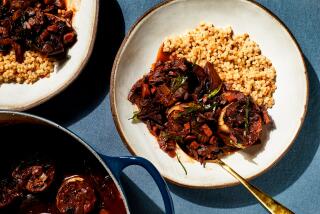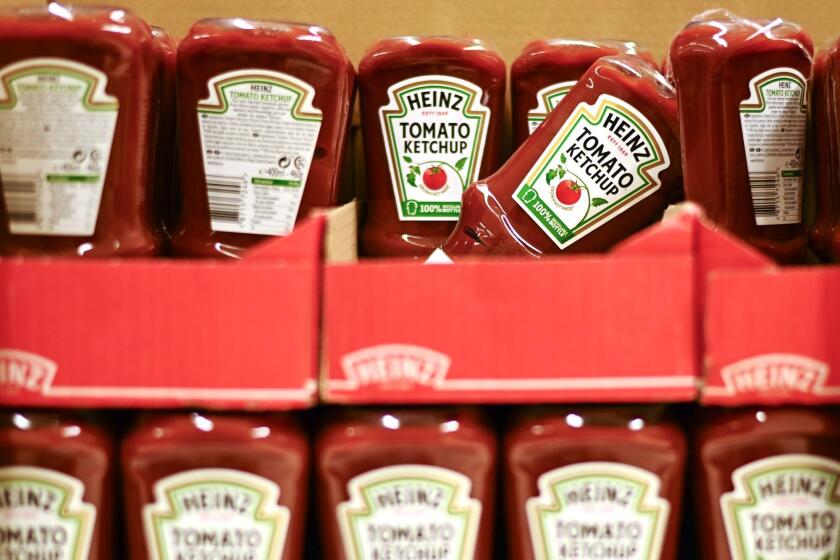There’s Eggplant and Then There’s . . . Eggplant
- Share via
Aside from salting, there are a few other things you ought to know about cooking eggplant.
First, as far as variety is concerned, there’s not much difference among the eggplants you usually find in grocery stores. In the great divide between the so-called Asian eggplants--the long thin ones--and the eggplants called Italian--the round fat ones--the major difference is shape. They taste basically the same and have pretty much the same texture.
But shop at Asian groceries or farmers markets and you will find oddball eggplants that are very different. I once tried to saute a bunch of the white egg-shaped eggplants and quickly learned that they are full of seeds and more bitter than usual. And if you want to talk about bitter, try cooking some of those little green pea-like dudes that provide the punch in Thai curries. Those are accent marks, not vegetables.
At the other end of the scale is the Rosa Bianca, a lilac-and-white Italian eggplant so deeply striated that it resembles nothing so much as an overstuffed piece of furniture. It cooks to the creamiest texture of any eggplant I’ve found.
Peeling eggplant is another side issue. I’ve found it is definitely not necessary and in some cases is even undesirable. The presence of the peel doesn’t change the taste and it does help to hold the eggplant together, especially during frying. Peeled eggplant slices tend to fall apart.
Finally, there’s the business about male and female eggplants and seeds. It has been proposed that male eggplants, with “outie” bellybuttons, have fewer seeds than female eggplants, with “innie” bellybuttons.
Botanically, there is no such thing as a male or female vegetable. And in the couple of dozen eggplants I sliced during the cooking experiments, I could see no difference between the “innies” and the “outies” in the amount of seeds they contained.
Beyond that, I could see no correlation between the amount of seeds and the bitterness of the eggplant. What did seem to make a difference was the age of the vegetable. Those eggplants that were going flaccid, with seeded areas that were gapped and open, were slightly more bitter than the fresh, firm ones.
More to Read
Eat your way across L.A.
Get our weekly Tasting Notes newsletter for reviews, news and more.
You may occasionally receive promotional content from the Los Angeles Times.










